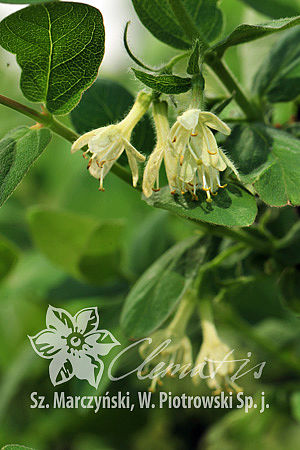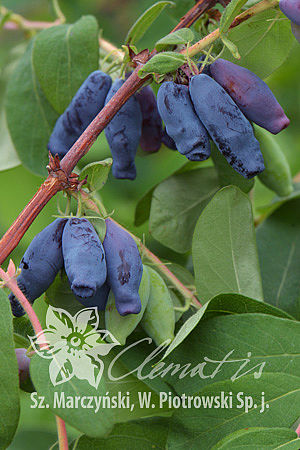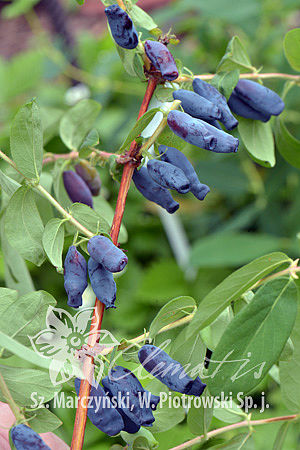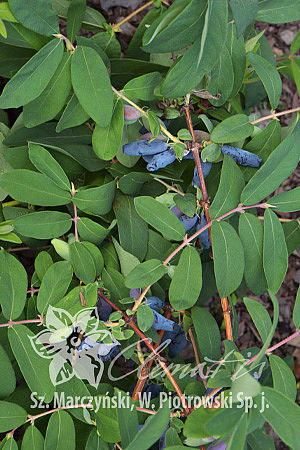Lonicera kamtschatica
haskap (blue honeysuckle, honeyberry)| 装饰形式 | cultivated for its berries |
|---|---|
| 花色 | --- |
| 花期 | IV |
| 年生长量 | 0.4-0.7 m |
| 种植方位 | sun, 3/4 sun, 1/2 sun |
| 耐寒区 | Zones 3 - 7 |
| 1m2的密度 | 1 |
| 常绿植物 | no |
A long-lived and highly frost hardy plant cultivated for its tasty and valuable berries, ripening early in our climate. Its habit is upright and round, and the height reaches 1.5-2 m. Inconspicuous, pale yellow, nectar-rich flowers appear in the first half of April. They require cross pollination, therefore the plant thrives in the vicinity of other varieties of the species. The fruit sets early – in the second or third year after planting in C2 containers. Following a couple of years of cultivation 2-6 kg of fruit can be collected from one plant. The berries ripen as early as May – June (depending on the variety and on the weather). They are narrow oval-shaped, dark blue with a waxy coating and uneven surface, tasty, sweet and sour with a hint of bitterness, juicy. The berries are a valuable addition to daily diet – rich in vitamins, macro- and microelements (magnesium, iron, copper, iodine), they also contain anthocyanins and ascorbic acid. They act as antioxidants, antiseptics and have anti-inflammatory properties. They are excellent eaten raw as well as – out of season – dried, frozen or in the form of jam, juice or infusion. They can serve as natural red colouring for food. Lonicera caerulea does not require much attention as it is a healthy, disease and pest resistant plant. It bears best fruit in light and well drained, slightly acidic soil(soil acidification is not necessary like in blueberry’s case, but it does wither in alkaline soil). Despite low soil requirements it is drought intolerant due to its shallow root system. The plant prefers sunny sites. It does not require regular pruning as it could limit the crops. The growth is slow in the first couple of years after planting and only when the plant thickens, some pruning is needed to allow light penetration.




